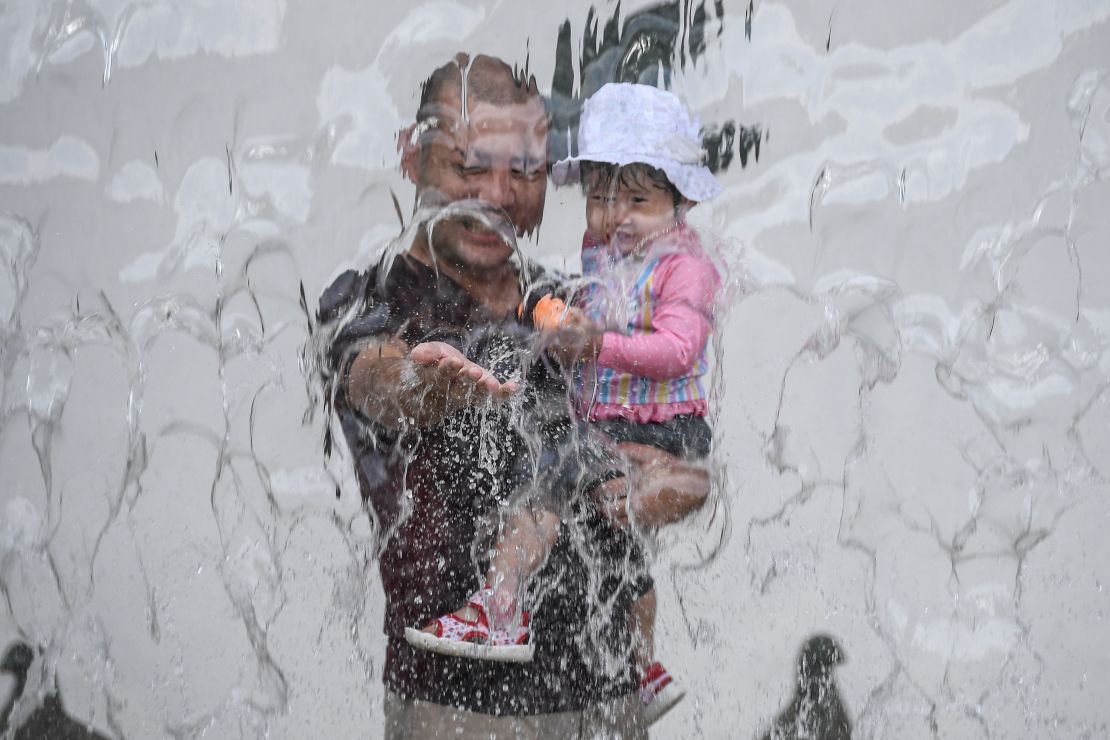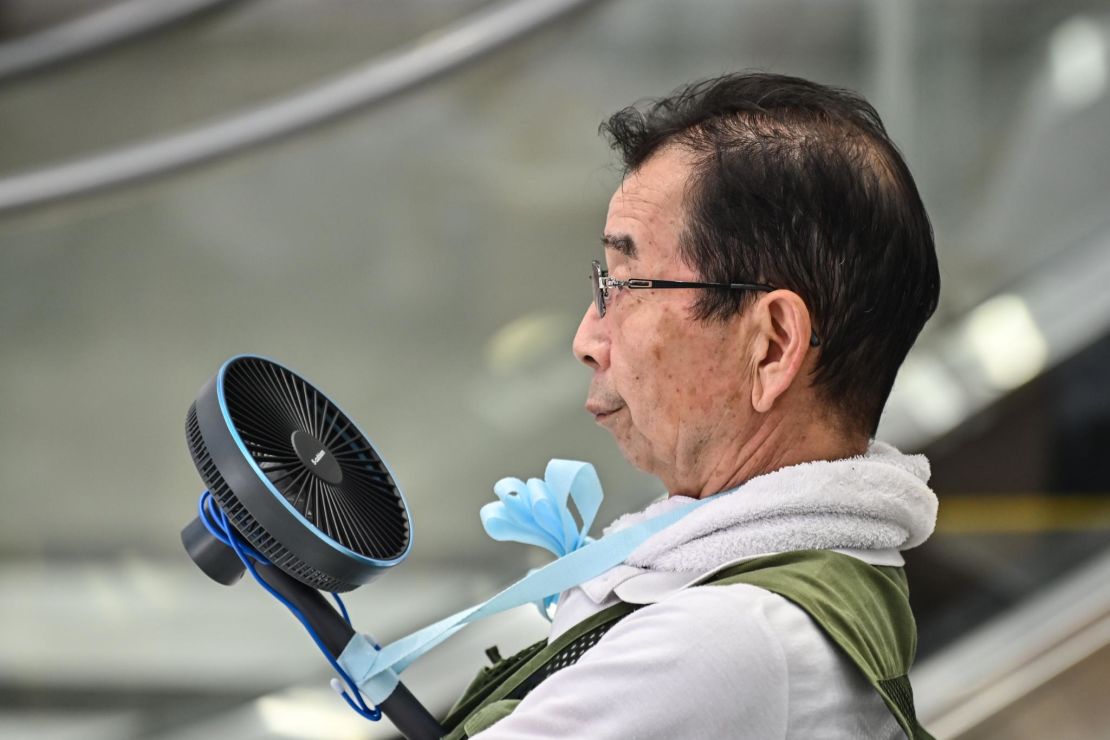Temperatures in central Japan tied for a national record on Monday, as the country sweltered under a scorching summer heat wave.
The mercury rose to 41.1 degrees Celsius (105.98 degrees Fahrenheit) in the central city of Hamamatsu, in Shizuoka prefecture on Monday, according to the Japan Meteorological Agency, matching the highest temperature ever recorded in the country, which was set in Kumagaya, a city near Tokyo, in July 2018.
Japan has been enduring an intense heatwave since the middle of last week, with multiple cities and prefectures nearing 40°C (104°F) for several consecutive days.
To compare, the average daytime temperature in August for Hamamatsu between 1898 and 2010 was 31.3°C (88.34°F), the JMA said. Last year, average temperatures in Japan reached the highest level since records began in 1898, and were almost a degree warmer than a typical year, according to the JMA.
“Monday was a scorching hot day (like) I’ve never experienced, I was wearing a mask outside and drenched in sweat in the heat,” said Satoru Shoji, who works at the Hamamatsu tourism office.
On Monday, cities in Nagano, Gifu, Nara, Kochi and Miyazaki prefectures – covering central and southwestern Japan – saw temperatures above 39°C (102.2°F).
Residents in the capital Tokyo broiled in 36.5°C weather, and have endured three straight days of temperatures above 35°C. Meanwhile, Osaka posted a high of 37.1°C (98.7°F) on Monday, and the popular tourist town of Kyoto reached 38.7°C (101.6°F)
Of the country’s 921 observation spots, 655 locations saw 30°C (86°F) weather, and 265 observed temperatures of over 35°C (95°F) on Monday.
Another Hamamatsu resident who works at an eel teriyaki restaurant and gave her name as Ms. Ota, said, “I could not believe the temperature reached that high, but it feels as if a hot wind was blowing.”

Health officials are urging people to take precautions to avoid heat stroke and other heat-related illnesses.
“Potential for heat illness is higher than usual,” the JMA said in a statement, adding that people should “take appropriate measures,” including drinking lots of water, staying away from direct sunlight and using air conditioners.
The hot weather is set to continue. The agency has forecast extreme highs for much of the country’s south on Tuesday, with some areas forecast to reach 39°C (102.2°F).
As of 11 a.m. local time, 512 locations were already over 30°C (86°F) and 41 had observed 35°C (95°F) or more.
Forecasts show the heat is expected to stay until the weekend over southern Japan.
CNN Meteorologist Michael Guy said a ridge of high pressure set up in the mid-upper portions of the atmosphere was blocking other weather systems – such as a cold front – from pushing into the region, creating a “dome effect.”
“The dome effect basically creates a lid similar to a cake dish or a greenhouse and once the shortwave radiation from the sun comes through it doesn’t allow for the long wave radiation to escape, allowing the heat to build over a few days,” Guy said.
A big danger, especially for the elderly or those with health conditions, is that during heat waves like this temperatures don’t cool off at night as they usually would do, Guy said.
“Above average temperatures during the day and at night can spell trouble and cause heat stress related ailments such as heat stroke, heart attack and even death,” he said.
There are also concerns that masks worn outside to help stop the spread of coronavirus could contribute to heat-related illnesses.
Japan Safe Travel, which is managed by the Japan National Tourism Organization, warned on Twitter on August 5 that, “Wearing a mask in summer with high temperature and humidity may cause heat stroke.”
“Therefore, if it’s possible to keep a distance at least 2 meters or more with others outside, remove your mask to avoid heat stroke.”

Record temperatures around the world
Japan’s record temperatures come on the same day that Death Valley National Park, in California, potentially recorded the hottest temperature in the world since 1913.
The hottest, driest and lowest national park in California and Nevada recorded a preliminary high temperature of 54.4°C (130°F) on Sunday, according to the United States National Weather Service (NWS). The all-time high of 56.6°C (134°F), reported over 100 years ago, was also recorded in Death Valley.
The Western US and southwest Canada are bracing for another week of extreme heat as dozens of temperature records are expected to be broken. Nearly 60 million people in the US, from Arizona up to the US-Canada border, are under a heat advisory, watch or warning this week.
Searing summer heat waves are among the dangerous consequences of human-caused climate change.
A study published in February projects that without steps to rein in heat-trapping gas pollution, as many as three-quarters of summer days across much of the Northern Hemisphere could feature nearly around-the-clock extreme heat by 2100.
The study from the Chinese Academy of Meteorological Sciences, the Institute of Atmospheric Physics and other research centers, found that already, compound extreme heat days – when both daytime and nighttime temperatures are above the 90th percentile historically for that date – are on the rise.
Some scientists say these nearly nonstop sweltering temperatures will stretch our ability to adapt and in some places, could test the limits of human survivability, especially among vulnerable populations.






